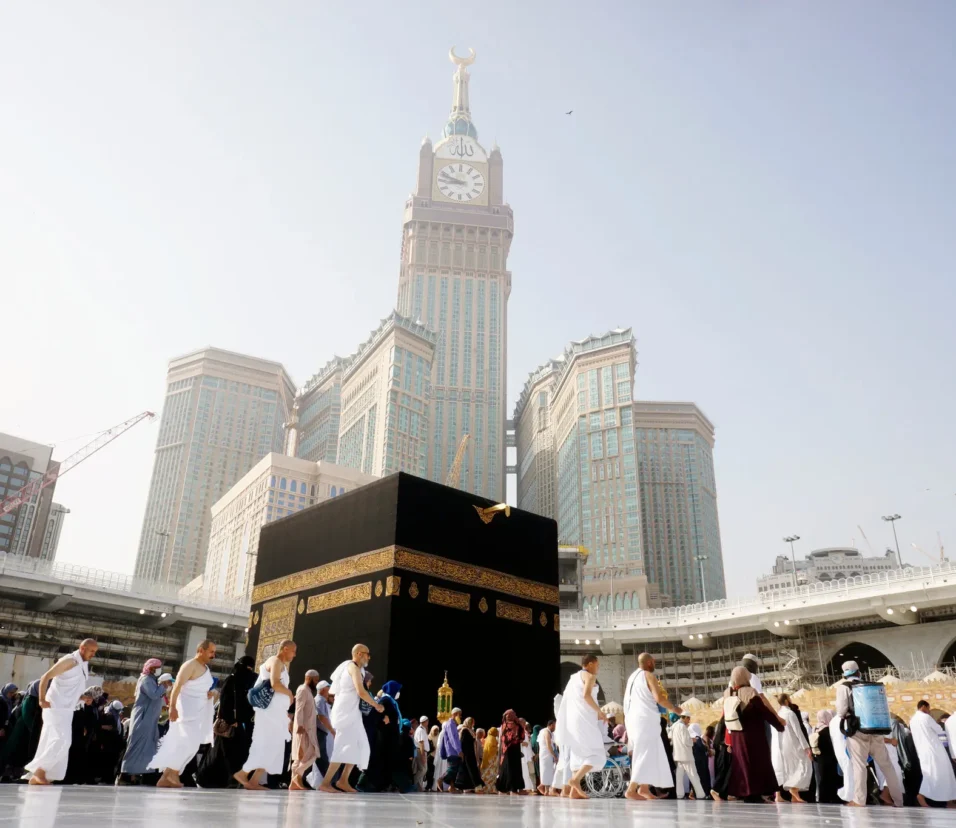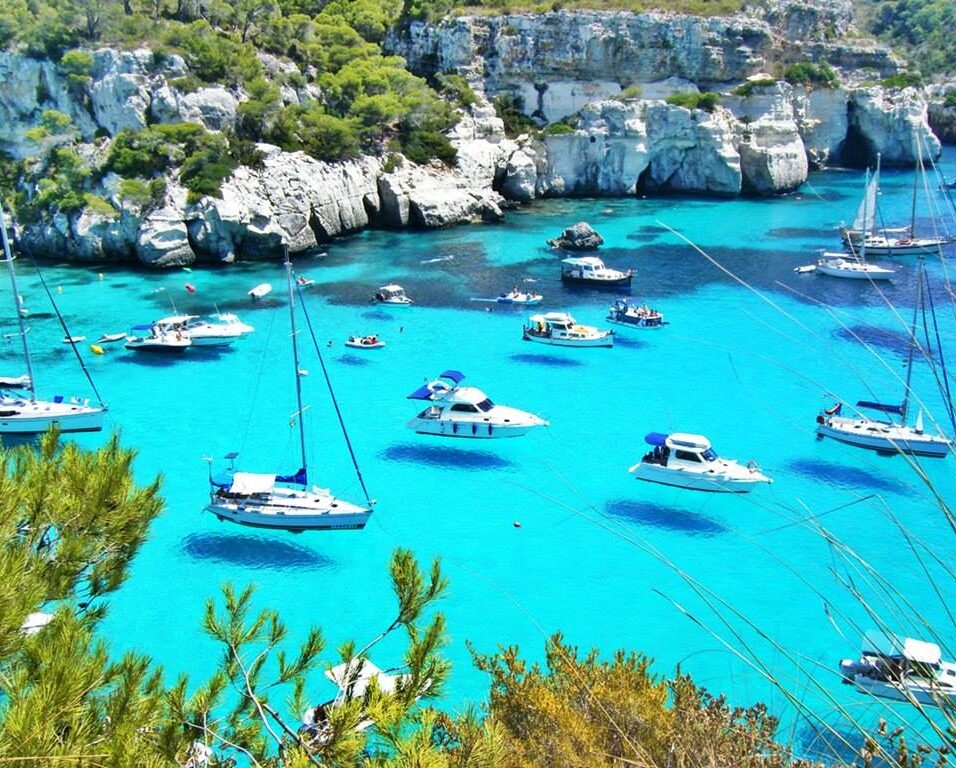Char Dham Yatra
Char Dham, also known as Chhota Char Dham, means “four smaller pilgrimages,” is the collective name for four major pilgrimages in the Indian state of Uttarakhand: Yamunotri, Gangotri, Kedarnath, and Badrinath. For Hindu devotees, Char Dham darshan (holy visit) is a lifelong desire. The great dhams (pilgrimages) are thought to be the places where gods and goddesses lived and roamed during the Vedic period. Many sages and pilgrims follow in their footsteps, visiting the Dhams for devotional purposes. Char Dham of Dev Bhoomi Uttarakhand is known as chhota Char Dham because the four major Char Dham pilgrimages—Rameshwaram, Dwaraka, Puri, and Badrinath—are spread across the country. The Uttarakhand Char Dham includes representatives from all three major Hindu sectarian traditions: Shakta (goddess) sites Yamunotri and Gangotri, one Shaiva site Kedarnath, and one Vaishnava site Badrinath.
Char Dham is open for darshan (holy visit) from May to October each year. Char Dham Yatra (tour) is a common practice among Hindu devotees in India, Nepal, and around the world. The yatra begins in Haridwar and travels through Rishikesh before reaching Yamunotri in Uttarkashi district. Gangotri is the second destination for Char Dham pilgrims. After completing Shraddha (last rites of deceased ancestors) in Gaumukh, the snout of the Gangotri glacier, and worshipping Goddess Ganga at the Gangotri temple, religious tourists travel to the Kedarnath temple. Hindu devotees believe that Kedarnath should be visited before Badrinath. According to the sages, Badrinath should be visited after Kedarnath in order to establish him (lord Vishnu) as a witness that the yatri (pilgrim) paid homage to Kedarnath (lord Shiva).
Char Dham is not only for religious pilgrimages, but it can also be a lot of fun for adventurers who enjoy hiking through the mountains. The picturesque beauty of the surroundings on the way to all four dhams provides tourists with great pleasure and rejuvenates the soul. The captivating Himalayas, mesmerizing glaciers, and enchanting rivers and streams appear to whisper a love song in the hearts of trekkers. There are numerous other excursion destinations nearby all four Dhams that should not be missed when visiting Char Dham for religious or adventurous reasons.
Char Dham, the four pilgrimages, have their own important stories related to gods and goddesses:
Do you want to visit Char Dham? Char Dham Travel Agent is the best place to plan your Char Dham tour. You can book the tour from here.
Yamunotri is the first destination for Char Dham visitors. Yamunotri is located at an altitude of 3,165 meters and is a part of the Yamuna River, travel agents in haridwar which originates from glaciers 1 kilometer away. Yamunotri is located on the opposite side of Gangotri. People cook rice wrapped in cloth and dip it in hot water before offering it to the gods as prasad.
Gangotri: As the name suggests, Gangotri is related to the Ganga River. Gangotri is the location where King Bhagirath’s penance was answered by Goddess Ganga, with the assistance of Lord Shiva. According to legend, King Bhagirath prayed to Goddess Ganga to wash away his ancestors’ ashes, and Ganga sought the help of Lord Shiva because the earth could not withstand the force of her water flow. The Shivalingam, which originated there to hold the flow of the Ganga, can be seen during the winter when the water level is low.
Amar Singh Thapa, the Gorkha commander, built a temple in Gangotri in the 18th century.
Kedarnath: Lord Shiva’s temple is the third destination on the Char Dham pilgrimage. The story of Kedarnath is derived from Hindu mythology, specifically the Mahabharata. We can read that Lord Shiva transformed into a bull and dived in this location while fleeing from Pandavas, who prayed to him to keep them from sin following the war with Kauravas. While diving, a part of his body remained outside the earth, forming a pyramid-like structure in Kedarnath.
Would you like to visit Indiar? A tour operator in India is the best place to plan your tour. You can book a tour from here.
Shankaracharya built the temple of Kedarnath in the eighth century.
Badrinath: Badri is one of Lord Vishnu’s names. Badrinath is the fourth and final Char Dham destination. Badrinath has the twin hills char dham yatra of Nar (Arjun, the third Pandav in the Mahabharata) and Narayan (Lord Vishnu), with the Alakhanand Ganga flowing near the Lord Vishnu Temple. Alakhanand is one of Ganga’s 12 streams, and she was originally created to carry the ashes of King Bhagirath’s ancestors.
These four Dhams are the major Char Dham pilgrimages in Kedarkhand, but there are many other religious and adventurous destinations that one should visit to get the most out of the trip.
Best time to visit Char Dham
Plan your Chardham trip between May and October. During the winter, this part of Northern India receives snowfall, and extreme cold weather prevents you from visiting these sacred shrines.
Would you like to visit Haridwar? Travel agents in Haridwar are the best place to plan your trip. You can book your tour right here.
To be more specific, we recommend that you travel during May, June, late September, or October. The monsoon season, like in other hilly regions, can be difficult, with landslides causing damage to the route. The summer months of May and June are ideal for visiting Char Dham. Monsoon rains obstruct the route, and the occasional landslide is not only disruptive but also dangerous. Many people prefer October because it reminds them of the beautiful spring.
How do I get to Char Dham?
Your Char Dham trip will begin in Haridwar, but we can also organize it in Delhi. It is best to work with a tour operator to plan this trip because the weather and route are both unpredictable in this area. Tour organizers who have done this on a regular basis have experienced drivers and teams who can transport a group of people to all of the char dham yatra tour operators major destinations along the way in the time frame specified and within the budget. If you want to explore the Himalayas on your own and have enough time, you can plan a solo trip and enjoy life to the fullest.
So, as a solo traveler on the CharDham Yatra, Yamunotri will be your first destination. Here we discuss the closest airport, railhead, and roadways to Yamunotri of Char Dham.
By air: The nearest airport, Jolly Grant Dehradun, is 196 kilometers from Yamunotri.
By rail: Rishikesh railway station is 210 kilometers from Yamunotri, 232 kilometers from Haridwar, and 256 kilometers from Dehradun via the Rishikesh-Uttarkashi road.
By road: Yamunotri is 1.4 kilometers from Janaki Chhatti. Janaki Chhatti is located 41.4 kilometers from Uttarkashi in Uttarkashi district. Uttarkashi is well connected by roads from all over Uttarakhand.
To summarize, you can fly to Dehradun airport or take a train to Rishikesh/Haridwar/Dehradun before taking a bus, private car, or tour-operated vehicle to Janaki Chhatti. Janaki Chhatti, a beautiful village in Uttarkashi district, is… Here begins your journey. Hike!
Prime locations in Char Dham
Yamunatri Temple:
Lakhamandal is 70 kilometers from Yamunotri via Nandgaun on the Mussoorie-Yamunotri road. Lakha means a hundred thousand, and mandal means Shivlingam. Lakhamandal is thought to be where the Kauravas built a shelter house while conspiring to burn the Pandavas.
Surya Kund is a lake near the Yamunotri temple where pilgrims cook rice and potatoes to offer to the deity of the temple. The cooked rice is served as prasad by religious tourists back home.
Divya Shila: A massive rock pillar near Surya Kund at the Yamunotri temple entrance. Pilgrims must worship the Divya Shila before entering the Yamunotri Temple.
Gangotri Temple:
Submerged Shivaling: The Submerged Shivaling in Gangotri is a historical site where Lord Shiva is said to have sat to receive the Ganga in his hair locks as the Ganga came down to earth to wash away the ashes of King Bhagirath’s ancestors. The Shivaling is submerged and becomes visible at the start of the winter season, when the water level in the sacred Ganga drops.
Kedarnath Temple:
Shankaracharya Samadhi: Aadi Guru Shankaracharya’s final resting place (Samadhi) is in Kedarnath, near the Kedarnath Temple. It is believed that at the age of 32, Aadi Guru Shankaracharya went to Samadhi after establishing four Dhamas in four corners of India: Rameshwaram in Tamil Nadu in the south, Puri in Odisha in the east, Badrinath in Uttarakhand in the north, and Dwaraka Dham in the west.
The Badrinath Temple
Tapt Kund, a hot spring with a year-round temperature of 45 °C, is located on the grounds of the Badrinath temple. Pilgrims bathe in Tapt Kund before entering the Badrinath Temple. They also believe that the water contains medicinal properties.
Neelkanth Peak: Also known as the Garhwal Queen, Neelkanth Peak is located behind Badrinath and towers in the shape of a pyramid, attracting tourists with its unparalleled beauty.
Charanpaduka is a beautiful meadow near the Badrinath temple where devotees pray in the footprints of Lord Vishnu. Charan means feet, and paduka means pilgrimage, giving it holy honor because the foot prints are thought to be those of Lord Vishnu.
Brahma Kapal is a flat space on the bank of the Alakhnanda River near the Badrinath temple where Hindu devotees perform the last rites of their deceased ancestors.
Sheshnetra: A boulder shaped like Sheshnag’s eye can be found on the grounds of the Badrinath Temple. Sheshnag is the serpent with a hundred heads in which Lord Vishnu sleeps in Vaikuntha.
Places near Char Dham
Janaki Chatti is another name for Goddess Sita, the wife of Lord Rama, an incarnation of Lord Vishnu in the Treta Yuga. Janaki Chatti, on the way to Yamunotri, is a beautiful village from which the trek begins. Janaki Chhatti, the last village on the Yamunotri route, is well-known for its hot water springs, where Char Dham pilgrims take baths.
Hanuman Chatti: Temple dedicated to Hanuman, Hanuman Chhatti is believed to be the location where the second Pandava Bheema of the Hindu holy epic Mahabharata met with god Hanuman, the monkey form of Lord Shiva incarnated to support Lord Vishnu, who had incarnated as Lord Rama during the Treta Yuga period. Hanuman appeared in Dwapar Yuga in front of Bheema as an old monkey with a long tail on the way to pick a flower for Draupadi during their exile. Hanuman did so to test Bheema’s strength, which he boasted about. When Bheema couldn’t lift Hanuman’s tail, he realized it wasn’t just any monkey, but Lord Shiva himself, who had come to bless him.
Ranachatti: Rana Chatti, 16 kilometers from Yamunotri, is a small picturesque village where pilgrims rest and occasionally stop for the night. The beautiful village with hospital villagers and painted houses draws tourists with its enchanting surroundings. The Shani Maharaj temple and Lake Bugyal Dhinara are approximately 3.5 kilometers from Rana Chhatti.
Syana Chatti is a small, beautiful spot on the banks of the sacred river Yamuna. Syana Chatti, 18 kilometers from Yamunotri, serves as a rest stop for pilgrims to Yamunotri. Pilgrims stop for the night at Syanachatti.
Bhaironghati is a small forested village 10 kilometers from Gangotri with a Bhairav temple. Pilgrims to Char Dham believe that after visiting Gangotri, they must also visit the Bhairav temple in Bhaironghati. A small town called Lanka Chatti, located 3 kilometers from Bhaironghati, is home to Asia’s highest bridge over the Jhanvi River, which stands 2789 meters above sea level.
Gaumukh: The Gangotri glacier emerges from a circle beneath the Chaukhamba peak, flows roughly northwest, and makes a turn to form a cow mouth. The point is called Gaumukh, which comes from the words gau (cow) and mukh (mouth). The Gangotri glacier feeds the Bhagirathi River, one of the Ganga’s major tributaries, through Gaumukh. Gaumukh is located near the base of Shivling Peak.
Kedar Tal, located 18 kilometers from Gangotri temple, is a beautiful glacial lake on the slopes of Thaliyasagar peak. Views of tall Himalayan peaks from the lake appear to compete with the allure of Kedar Tal. Kedar Tal serves as a base camp for exploring the surrounding Himalayan mountains.
Nandavan Tapovan: Nandanvan is the base camp for Bhagirathi peak, located 25 kilometers from Gangotri temple on the way to the Gangotri glacier. The beautiful Nandanvan provides a panoramic view of Shivling Peak.
Chorbari Lake / Gandhi Sarovar:
Vasuki Tal:
Gaurikund is the lake where Goddess Parvati bathed in ancient times. The beautiful lake near Kedarnath temple contains hot water springs that have been converted into bathing areas, and pilgrims to Kedarnath bathe in them before entering the temple.
Sonprayag: The Mandakani River meets the Basuki River in Rudraprayag district, forming the holy confluence of Son Prayag. Hindu devotees regard the holy confluence as very sacred, and it is believed that anyone who touches the water of Son Prayag attains Baikunth Dham (lord Vishnu’s place).
Triyuginarayan: Trijuginarayan in Rudraprayag district is revered as the site of Lord Shiva and Goddess Parvati’s marriage ceremony. There is a burning flame in Trijuginarayan that never goes out, and it is believed that Shiva and Parvati took the oath of marriage while circling the flame.
Mata Murti Temple: The Mata Murti Temple is dedicated to Lord Badrinath’s mother and is located 3 kilometers from the Badrinath Temple.
Mana Village: Three kilometers from the Badrinath temple, along the Alaknanda river, is a small, beautiful village called Mana, which houses Vyas Gufa, where the writer of the Mahabharata, sage Vyas, was born and meditated. The Saraswati River is visible near Vyas Gufa and Ganesh Guha. You can also see Vasudhara waterfall by trekking 4 kilometers from char dham yatar from haridwar Mana village. The wooden houses with lovely balconies, as well as the houses with slate walls and roofs built in traditional style along the narrow stone paths in Mana village, attract you as much as the locals do with their pleasing smiles and warm interactions.
Alka Puri is believed to be the home of Yakshya, Gandarva, and Kuber. Alka Puri is 15 kilometers from Badrinath temple. The Alakhnanda river originates from the Satopanth glacier at Alka Puri, which is also the snout of the Bhagirath-Khark glacier.





